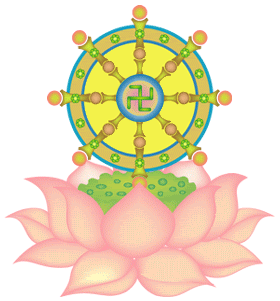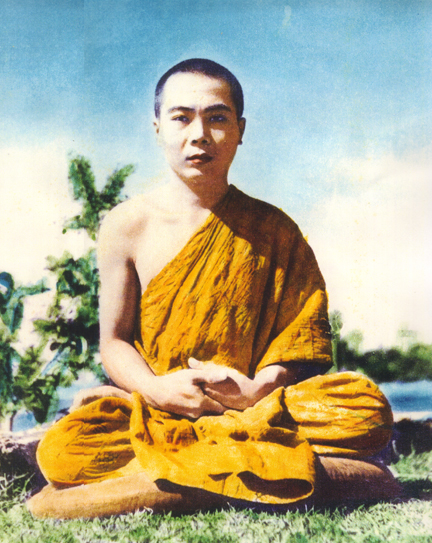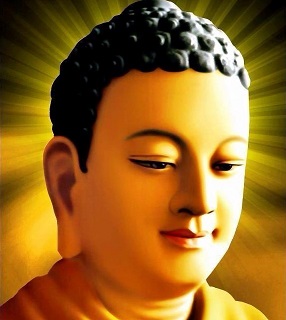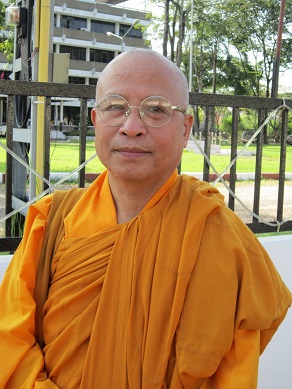Trang nhất » Tin Tức » KINH TẠNG
Kinh Chánh tri kiến - Kinh trung bộ 1
Thứ ba - 27/10/2015 15:489. Kinh Chánh tri kiến
(Sammàditthi sutta)
Như vầy tôi nghe.
Một thời Thế Tôn ở Savatthi (Xá-vệ), tại Jetavana (Kỳ-đà Lâm), vườn ông Anathapindika (Cấp Cô Ðộc). Lúc bấy giờ, Tôn giả Sariputta (Xá-lợi-phất) gọi các Tỷ-kheo: "Này các Tỷ-kheo".--"Hiền giả", các Tỷ-kheo ấy vâng đáp Tôn giả Sariputta. Tôn giả Sariputta nói như sau:
-- Chư Hiền, chánh tri kiến, chánh tri kiến, được gọi là như vậy. Chư Hiền, cho đến như thế nào, một Thánh đệ tử có chánh tri kiến, có tri kiến chánh trực, có lòng tin Pháp tuyệt đối và thành tựu diệu pháp này?
-- Chúng tôi từ xa đến để được hiểu ý nghĩa lời nói ấy từ Tôn giả Sariputta. Thật lành thay, nếu Tôn giả Sariputta giảng cho ý nghĩa lời nói ấy. Sau khi nghe Tôn giả Sariputta, các Tỷ-kheo sẽ thọ trì.
-- Chư Hiền, vậy hãy nghe, hãy khéo tác ý. Ta sẽ giảng.-- Thưa vâng, Hiền giả! - Các Tỷ-kheo vâng đáp Tôn giả Sariputta.
Tôn giả Sariputta nói như sau:
(Thiện và bất thiện)
-- Chư Hiền, khi Thánh đệ tử tuệ tri được bất thiện và tuệ tri được căn bổn bất thiện, tuệ tri được thiện và tuệ tri được căn bổn thiện, chư Hiền, khi ấy Thánh đệ tử có chánh tri kiến, có tri kiến chánh trực, có lòng tin Pháp tuyệt đối và thành tựu diệu pháp này.
Chư Hiền, thế nào là bất thiện, thế nào là căn bổn bất thiện, thế nào là thiện, thế nào là căn bổn thiện? Chư Hiền, sát sanh là bất thiện, lấy của không cho là bất thiện, tà hạnh trong các dục là bất thiện, nói láo là bất thiện, nói hai lưỡi là bất thiện, ác khẩu là bất thiện, nói phù phiếm là bất thiện, tham dục là bất thiện, sân là bất thiện, tà kiến là bất thiện. Chư Hiền, như vậy gọi là bất thiện.
Và chư Hiền, thế nào là căn bổn bất thiện? Tham là căn bổn bất thiện, sân là căn bổn bất thiện, si là căn bổn bất thiện. Chư Hiền, như vậy gọi là căn bổn bất thiện.
Và này chư Hiền, thế nào là thiện? Từ bỏ sát sanh là thiện, từ bỏ lấy của không cho là thiện, từ bỏ tà hạnh trong các dục là thiện, từ bỏ nói láo là thiện, từ bỏ nói hai lưỡi là thiện, từ bỏ ác khẩu là thiện, từ bỏ nói phù phiếm là thiện, không tham dục là thiện, không sân là thiện, chánh tri kiến là thiện. Chư Hiền, như vậy gọi là thiện.
Chư Hiền, thế nào là căn bổn thiện? Không tham là căn bổn thiện, không sân là căn bổn thiện, không si là căn bổn thiện. Chư Hiền, như vậy gọi là căn bổn thiện.
Chư Hiền, khi nào Thánh đệ tử tuệ tri bất thiện như vậy, tuệ tri căn bổn bất thiện như vậy, tuệ tri thiện như vậy, tuệ tri căn bổn thiện như vậy, khi ấy, vị ấy đoạn trừ tất cả tham tùy miên, tẩy sạch sân tùy miên, nhổ tận gốc kiến mạn tùy miên "Tôi là", đoạn trừ vô minh, khiến minh khởi lên, diệt tận khổ đau ngay trong hiện tại. Chư Hiền, như vậy Thánh đệ tử có chánh tri kiến, có tri kiến chánh trực, có lòng tin Pháp tuyệt đối và thành tựu diệu pháp này.
(Thức ăn)
-- Lành thay, Hiền giả!
Các Tỷ-kheo ấy, sau khi hoan hỷ, tín thọ lời nói Tôn giả Sariputta và hỏi thêm Tôn giả Sariputta câu hỏi như sau:
- Này Hiền giả, có thể có pháp môn nào khác, nhờ pháp môn này vị Thánh đệ tử có chánh tri kiến, có tri kiến chánh trực, có lòng tin Pháp tuyệt đối và thành tựu diệu pháp này?
-- Chư Hiền, có thể có. Chư Hiền, khi nào Thánh đệ tử tuệ tri thức ăn, tuệ tri tập khởi của thức ăn, tuệ tri đoạn diệt của thức ăn, và tuệ tri con đường đưa đến đoạn diệt của thức ăn, chư Hiền, khi ấy Thánh đệ tử có chánh tri kiến, có tri kiến chánh trực, có lòng tin Pháp tuyệt đối và thành tựu diệu pháp này.
Chư Hiền, thế nào là thức ăn, thế nào là tập khởi của thức ăn, thế nào là đoạn diệt của thức ăn, thế nào là con đường đưa đến đoạn diệt của thức ăn? Chư Hiền, có bốn loại thức ăn này, khiến các loài chúng sanh đã sanh được an trú hay các loài hữu tình sẽ sanh được hỗ trợ cho sanh. Thế nào là bốn? Ðoàn thực, loại thô hay loại tế, xúc thực là thứ hai, tư niệm thực là thứ ba, thức thực là thứ tư. Từ tập khởi của ái có tập khởi của thức ăn, từ đoạn diệt của ái có đoạn diệt của thức ăn. Thánh Ðạo Tám Ngành này là con đường đưa đến đoạn diệt của thức ăn, tức là: Chánh Tri kiến, Chánh Tư duy, Chánh Ngữ, Chánh Nghiệp, Chánh Mạng, Chánh Tinh tấn, Chánh Niệm, Chánh Ðịnh.
Chư Hiền, khi nào Thánh đệ tử tuệ tri thức ăn như vậy, tuệ tri tập khởi của thức ăn như vậy, tuệ tri đoạn diệt của thức ăn như vậy, tuệ tri con đường đưa đến đoạn diệt của thức ăn như vậy, khi ấy, vị ấy đoạn trừ tất cả tham tùy miên, tẩy sạch sân tùy miên, nhổ tận gốc kiến mạn tùy miên "Tôi là", đoạn trừ vô minh, khiến minh khởi lên, diệt tận khổ đau ngay trong hiện tại. Chư Hiền, như vậy Thánh đệ tử có chánh tri kiến, có tri kiến chánh trực, có lòng tin Pháp tuyệt đối và thành tựu diệu pháp này.
(Tứ diệu đế)
-- Lành thay, Hiền giả!
Các Tỷ-kheo ấy, sau khi hoan hỷ, tín thọ lời nói Tôn giả Sariputta liền hỏi thêm Tôn giả Sariputta câu hỏi như sau:
-- Này Hiền giả, có pháp môn nào khác, nhờ pháp môn này Thánh đệ tử có chánh tri kiến, có tri kiến chánh trực, có lòng tin Pháp tuyệt đối và thành tựu diệu pháp này?
-- Chư Hiền, có thể có. Chư Hiền, khi nào Thánh đệ tử tuệ tri Khổ, tuệ tri Tập khởi của khổ, tuệ tri Ðoạn diệt của khổ, tuệ tri Con Ðường đưa đến đoạn diệt của khổ, chư Hiền, khi ấy Thánh đệ tử có chánh tri kiến, có tri kiến chánh trực, có lòng tin Pháp tuyệt đối và thành tựu diệu pháp này.
Chư Hiền, thế nào là Khổ, thế nào là Tập khởi của khổ, thế nào là Ðoạn diệt của khổ, thế nào là Con Ðường đưa đến đoạn diệt của khổ? Sanh là khổ, già là khổ, bệnh là khổ, chết là khổ, sầu bi khổ ưu não là khổ, cầu không được là khổ, tóm lại năm thủ uẩn là khổ. Chư Hiền, như vậy gọi là Khổ.
Chư Hiền, thế nào là Tập khởi của khổ? Chính là ái đưa đến tái sanh, cùng khởi hỷ dục và tham hướng đến tái sanh, cùng khởi hỷ dục và tham, tìm cầu hỷ lạc chỗ này chỗ kia, tức là dục ái, hữu ái, phi hữu ái. Chư Hiền, như vậy gọi là Tập khởi của khổ.
Chư Hiền, thế nào là Ðoạn diệt của khổ? Ðó là sự đoạn diệt, ly tham, không có dư tàn, sự quăng bỏ, sự từ bỏ, sự giải thoát, sự vô chấp khát ái ấy.
Chư Hiền, thế nào là Con Ðường đưa đến đoạn diệt của khổ? Chính là Thánh Ðạo Tám Ngành đưa đến khổ diệt, tức là Chánh tri kiến... Chánh Ðịnh.
Chư Hiền, khi nào Thánh đệ tử tuệ tri Khổ như vậy, tuệ tri Tập khởi của khổ như vậy, tuệ tri Ðoạn diệt của khổ như vậy, tuệ tri con Ðường đưa đến đoạn diệt của khổ như vậy, khi ấy vị ấy đoạn trừ tất cả tham tùy miên, tẩy sạch sân tùy miên,... (như trên)... và thành tựu diệu pháp này.
(Già và chết)
-- Lành thay, Hiền giả... (như trên)... Này Hiền giả, có thể có pháp môn nào khác, nhờ pháp môn này Thánh đệ tử... (như trên)... thành tựu diệu pháp này?
-- Chư Hiền, có thể có. Chư Hiền, khi nào Thánh đệ tử tuệ tri già chết, tuệ tri tập khởi của già chết, tuệ tri đoạn diệt của già chết, tuệ tri con đường đưa đến đoạn diệt của già chết, chư Hiền, khi ấy Thánh đệ tử có chánh tri kiến,... (như trên)... và thành tựu diệu pháp này.
Chư Hiền, thế nào là già chết, thế nào là tập khởi của già chết, thế nào là đoạn diệt của già chết, thế nào là con đường đưa đến đoạn diệt của già chết? Thuộc bất kỳ hữu tình giới nào, trong từng mỗi loại hữu tình, sự già cả, suy lão, rụng răng, tóc bạc da nhăn, tuổi thọ ngày một hao mòn, bại hoại các căn; chư Hiền, như vậy gọi là già. Chư Hiền thế nào là chết? Thuộc bất kỳ hữu tình giới nào trong từng mỗi loại hữu tình, sự mệnh một, từ trần, hủy hoại, hoại diệt, tử biệt, mệnh chung, hủy hoại các uẩn, vất bỏ hình hài; chư Hiền, như vậy gọi là chết. Già như vậy và chết như vậy, chư Hiền, như vậy gọi là già chết. Từ sự tập khởi của sanh, có sự tập khởi của già chết, từ sự đoạn diệt của sanh, có sự đoạn diệt của già chết. Thánh Ðạo Tám Ngành này là con đường đưa đến đoạn diệt của già chết, tức là: Chánh Tri kiến... (như trên)... Chánh Ðịnh.
Chư Hiền, khi nào Thánh đệ tử tuệ tri già chết như vậy, tuệ tri tập khởi của già chết như vậy, tuệ tri đoạn diệt của già chết như vậy, tuệ tri con đường đưa đến đoạn diệt của già chết như vậy, khi ấy, vị ấy đoạn trừ tất cả tham tùy miên, tẩy sạch sân tùy miên... (như trên)..., và thành tựu diệu pháp này.
(Sanh)
-- Lành thay, Hiền giả... (như trên)... Này Hiền giả, có thể có pháp môn nào khác...?
-- Chư Hiền, có thể có. Chư Hiền, khi nào Thánh đệ tử tuệ tri sanh, tuệ tri tập khởi của sanh, tuệ tri đoạn diệt của sanh, tuệ tri con đường đưa đến đoạn diệt của sanh, chư Hiền, khi ấy vị Thánh đệ tử có chánh tri kiến... (như trên)... và thành tựu diệu pháp này.
Chư Hiền, thế nào là sanh, thế nào là tập khởi của sanh, thế nào là đoạn diệt của sanh, thế nào là con đường đưa đến đoạn diệt của sanh? Thuộc bất kỳ hữu tình giới nào trong từng mỗi loại hữu tình, sự sanh, hiện khởi, xuất hiện, hiện diện, hiện hành các uẩn, tụ đắc các xứ; Chư Hiền, như vậy gọi là sanh. Từ sự tập khởi của hữu có sự tập khởi của sanh, từ sự đoạn diệt của hữu, có sự đoạn diệt của sanh, và Thánh Ðạo Tám Ngành này là con đường đưa đến đoạn diệt của sanh, tức là: Chánh Tri kiến... Chánh Ðịnh.
Chư Hiền, khi nào Thánh đệ tử tuệ tri được sanh như vậy, tuệ tri được tập khởi của sanh như vậy, tuệ tri được đoạn diệt của sanh như vậy, tuệ tri được con đường đưa đến đoạn diệt của sanh như vậy, khi ấy, vị ấy đoạn trừ tất cả tham tùy miên... (như trên)... như vậy... (như trên)... và thành tựu diệu pháp này.
(Hữu)
-- Lành thay, Hiền giả... (như trên)... Này Hiền giả, có pháp môn nào khác...?
-- Chư Hiền, có thể có. Chư Hiền, khi nào Thánh đệ tử tuệ tri hữu, tuệ tri tập khởi của hữu, tuệ tri đoạn diệt của hữu, tuệ tri con đường đưa đến đoạn diệt của hữu, chư Hiền, khi ấy vị Thánh đệ tử có chánh tri kiến... (như trên)... và thành tựu diệu pháp này.
Chư Hiền, thế nào là hữu, thế nào là tập khởi của hữu, thế nào là đoạn diệt của hữu, thế nào là con đường đưa đến đoạn diệt của hữu? Chư Hiền, có ba hữu này: dục hữu, sắc hữu, vô sắc hữu. Từ tập khởi của thủ, có tập khởi của hữu; từ đoạn diệt của thủ có đoạn diệt của hữu và Thánh Ðạo Tám Ngành này là con đường đưa đến đoạn diệt của hữu, tức là: Chánh Tri kiến... Chánh Ðịnh.
Chư Hiền, khi nào Thánh đệ tử tuệ tri hữu như vậy, tuệ tri tập khởi của hữu như vậy, tuệ tri đoạn diệt của hữu như vậy, tuệ tri con đường đưa đến đoạn diệt của hữu như vậy, khi ấy, vị ấy đoạn trừ tất cả tham tùy miên... và thành tựu diệu pháp này.
(Thủ)
-- Lành thay, Hiền giả... (như trên)... Này Hiền giả, có thể có pháp môn nào khác...?
- Chư Hiền, có thể có. Chư Hiền, khi nào Thánh đệ tử tuệ tri tập khởi của thủ, tuệ tri đoạn diệt của thủ, tuệ tri con đường đưa đến đoạn diệt của thủ, khi ấy Thánh đệ tử có chánh tri kiến... và thành tựu diệu pháp này.
Chư Hiền, thế nào là thủ, thế nào là tập khởi của thủ, thế nào là đoạn diệt của thủ, thế nào là con đường đưa đến đoạn diệt của thủ? Chư Hiền, có bốn thủ này: dục thủ, kiến thủ, giới cấm thủ, ngã luận thủ. Từ tập khởi của ái, có tập khởi của thủ; từ đoạn diệt của ái, có đoạn diệt của thủ; và Thánh Ðạo Tám Ngành này là con đường đưa đến đoạn diệt của thủ, tức là: Chánh Tri kiến... Chánh Ðịnh.
Chư Hiền, khi nào Thánh đệ tử tuệ tri thủ như vậy, tuệ tri tập khởi của thủ như vậy, tuệ tri đoạn diệt của thủ như vậy, tuệ tri con đường đưa đến đoạn diệt của thủ như vậy, khi ấy, vị ấy đoạn trừ tất cả tham tùy miên và thành tựu diệu pháp này.
(Ái)
-- Lành thay, Hiền giả... (như trên)... Này Hiền giả, có pháp môn nào khác...?
-- Chư Hiền, có thể có. Chư Hiền khi nào Thánh đệ tử tuệ tri ái, tuệ tri tập khởi của ái, tuệ tri đoạn diệt của ái, tuệ tri con đường đưa đến đoạn diệt của ái, khi ấy Thánh đệ tử có chánh tri kiến... và thành tựu diệu pháp này.
Chư Hiền, thế nào là ái, thế nào là tập khởi của ái, thế nào là đoạn diệt của ái, thế nào là con đường đưa đến đoạn diệt của ái? Chư Hiền, có sáu loại ái này: sắc ái, thanh ái, hương ái, vị ái, xúc ái, pháp ái. Từ tập khởi của thọ, có tập của ái, từ đoạn diệt của thọ, có đoạn diệt của ái, và Thánh Ðạo Tám Ngành này là con đường đưa đến đoạn diệt của ái, tức là: Chánh Tri kiến... Chánh Ðịnh.Chư Hiền, khi nào Thánh đệ tử tuệ tri ái như vậy, tuệ tri tập khởi của ái như vậy, tuệ tri đoạn diệt của ái như vậy, tuệ tri con đường đưa đến đoạn diệt của ái như vậy, khi ấy, vị ấy, đoạn trừ tất cả tham tùy miên... và thành tựu diệu pháp.
(Thọ)
-- Lành thay, Hiền giả... (như trên)... Này Hiền giả, có thể có pháp môn nào khác...?
-- Chư Hiền, có thể có. Chư Hiền, khi nào Thánh đệ tử tuệ tri thọ, tuệ tri tập khởi của thọ, tuệ tri đoạn diệt của thọ, tuệ tri con đường đưa đến đoạn diệt của thọ, khi ấy Thánh đệ tử có chánh tri kiến... và thành tựu diệu pháp này.
Chư Hiền, thế nào là thọ, thế nào là tập khởi của thọ, thế nào là đoạn diệt của thọ, thế nào là con đường đưa đến đoạn diệt của thọ? Chư Hiền, có sáu loại thọ này: thọ do nhãn xúc sanh, thọ do nhĩ xúc sanh, thọ do tỷ xúc sanh, thọ do thiệt xúc sanh, thọ do thân xúc sanh, thọ do ý xúc sanh. Từ tập khởi của xúc, có tập khởi của thọ; từ đoạn diệt của xúc, có đoạn diệt của thọ; và Thánh Ðạo Tám Ngành này là con đường đưa đến đoạn diệt của thọ, tức là: Chánh Tri kiến... Chánh Ðịnh.Chư Hiền, khi nào Thánh đệ tử tuệ tri thọ như vậy, tuệ tri tập khởi của thọ như vậy, tuệ tri đoạn diệt của thọ như vậy, tuệ tri con đường đưa đến đoạn diệt của thọ như vậy, khi ấy, vị ấy đoạn trừ tất cả tham tùy miên... và thành tựu diệu pháp này.
(Xúc)
-- Lành thay, Hiền giả... (như trên)... Này Hiền giả, có thể có pháp môn nào khác...?
-- Chư Hiền, có thể có. Chư Hiền, khi nào Thánh đệ tử tuệ tri xúc, tuệ tri tập khởi của xúc, tuệ tri đoạn diệt của xúc, tuệ tri con đường đưa đến đoạn diệt của xúc, khi ấy Thánh đệ tử có chánh tri kiến... và thành tựu diệu pháp này.
Chư Hiền, thế nào là xúc, thế nào là tập khởi của xúc, thế nào là đoạn diệt của xúc, thế nào là con đường đưa đến đoạn diệt của xúc? Chư Hiền, có sau loại xúc này: nhãn xúc, nhĩ xúc, tỷ xúc, thiệt xúc, thân xúc, ý xúc. Từ tập khởi của sáu nhập, có tập khởi từ xúc; từ đoạn diệt của sáu nhập, có đoạn diệt của xúc, và Thánh Ðạo Tám Ngành này là con đường đưa đến đoạn diệt của xúc, tức là: Chánh Tri kiến... Chánh Ðịnh. Chư Hiền, khi nào Thánh đệ tử tuệ tri xúc như vậy, tuệ tri tập khởi của xúc như vậy, tuệ tri đoạn diệt của xúc như vậy, tuệ tri con đường đưa đến đoạn diệt của xúc như vậy, khi ấy, vị ấy đoạn trừ tất cả tham tùy miên... và thành tựu diệu pháp này.
(Nhập)
-- Lành thay, Hiền giả...câu hỏi như sau: Hiền giả, có thể có pháp môn nào khác...?
-- Chư Hiền, có thể có. Chư Hiền, khi nào Thánh đệ tử tuệ tri sáu nhập, tuệ tri tập khởi của sáu nhập, tuệ tri đoạn diệt của sáu nhập, tuệ tri con đường đưa đến đoạn diệt của sáu nhập, khi ấy Thánh đệ tử có chánh tri kiến... và thành tựu diệu pháp này.
Chư Hiền, thế nào là sáu nhập, thế nào là tập khởi của sáu nhập, thế nào là đoạn diệt của sáu nhập, thế nào là con đường đưa đến đoạn diệt của sáu nhập? Chư Hiền, có sáu nhập này: nhãn nhập, nhĩ nhập, tỷ nhập, thiệt nhập, thân nhập, ý nhập. Từ tập khởi của danh sắc có tập khởi của sáu nhập; từ đoạn diệt của danh sắc có đoạn diệt của sáu nhập; và Thánh Ðạo Tám Ngành này là con đường đưa đến đoạn diệt của sáu nhập, tức là: Chánh Tri kiến... Chánh Ðịnh.Chư Hiền, khi nào vị Thánh đệ tử tuệ tri sáu nhập như vậy, tuệ tri tập khởi của sáu nhập như vậy, tuệ tri đoạn diệt của sáu nhập như vậy, tuệ tri con đường đưa đến đoạn diệt của sáu nhập như vậy, khi ấy, vị ấy đoạn trừ tất cả tham tùy miên... và thành tựu diệu hạnh pháp này.
(Danh sắc)
-- Lành thay, Hiền giả... (như trên)... Này Hiền giả, có thể có pháp môn nào khác...?
-- Chư Hiền, có thể có. Chư Hiền, khi nào Thánh đệ tử tuệ tri danh sắc, tuệ tri tập khởi của danh sắc, tuệ tri đoạn diệt của danh sắc, tuệ tri con đường đưa đến đoạn diệt của danh sắc, khi ấy Thánh đệ tử có chánh tri kiến... và thành tựu diệu pháp này.
Chư Hiền, thế nào là danh sắc, thế nào là tập khởi của danh sắc, thế nào là đoạn diệt của danh sắc, thế nào là con đường đưa đến đoạn diệt của danh sắc? Thọ, tưởng, tư, xúc, tác ý, chư Hiền, như vậy gọi là danh; bốn đại và sắc do bốn đại tạo thành, chư Hiền, như vậy gọi là sắc; như vậy đây là danh và đây là sắc, Chư Hiền, như vậy gọi là danh sắc. Từ tập khởi của thức, có tập khởi của danh sắc; từ đoạn diệt của thức, có đoạn diệt của danh sắc; và Thánh Ðạo Tám Ngành này là con đường đưa đến đoạn diệt của danh sắc, tức là: Chánh Tri kiến... Chánh Ðịnh.Chư Hiền, khi nào Thánh đệ tử tuệ tri danh sắc như vậy, tuệ tri tập khởi của danh sắc như vậy, tuệ tri đoạn diệt của danh sắc như vậy, tuệ tri con đường đưa đến đoạn diệt của danh sắc như vậy, khi ấy, vị ấy, đoạn trừ tất cả tham tùy miên... và thành tựu diệu pháp này.
(Thức)
-- Lành thay, Hiền giả... (như trên)... Này Hiền giả, có thể có pháp môn nào khác...?
-- Chư Hiền, có thể có. Chư Hiền, khi nào Thánh đệ tử tuệ tri thức, tuệ tri tập khởi của thức, tuệ tri đoạn diệt của thức, tuệ tri con đường đưa đến đoạn diệt của thức, khi ấy Thánh đệ tử có chánh tri kiến... và thành tựu diệu pháp này.
Chư Hiền, thế nào là thức, thế nào là tập khởi của thức, thế nào là đoạn diệt của thức, thế nào là con đường đưa đến đoạn diệt của thức? Chư Hiền, có sáu loại thức này: nhãn thức, nhĩ thức, tỷ thức, thiệt thức, thân thức, ý thức. Từ tập khởi của hành, có tập khởi của thức; từ đoạn diệt của hành có đoạn diệt của thức; và Thánh Ðạo Tám Ngành này là con đường đưa đến đoạn diệt của thức, tức là: Chánh Tri kiến... Chánh Ðịnh.Chư Hiền, khi nào Thánh đệ tử tuệ tri thức như vậy, tuệ tri tập khởi của thức như vậy, tuệ tri đoạn diệt của thức như vậy, tuệ tri con đường đưa đến đoạn diệt của thức như vậy, khi ấy, vị ấy đoạn trừ tất cả tham tùy miên... và thành tựu diệu pháp này.
(Hành)
-- Lành thay, Hiền giả... (như trên)... Này Hiền giả, có thể có pháp môn nào khác...?
-- Chư Hiền, có thể có. Chư Hiền, khi nào Thánh đệ tử tuệ tri hành, tuệ tri tập khởi của hành, tuệ tri đoạn diệt của hành, tuệ tri con đường đưa đến đoạn diệt của hành, khi ấy Thánh đệ tử có chánh tri kiến... và thành tựu diệu pháp này.
Chư Hiền, thế nào là hành, thế nào là tập khởi của hành, thế nào là đoạn diệt của hành, thế nào là con đường đưa đến đoạn diệt của hành? Chư Hiền, có ba loại hành này: thân hành, ngữ hành, tâm hành. Từ tập khởi của vô minh, có tập khởi của hành; từ đoạn diệt của vô minh, có đoạn diệt của hành; và Thánh Ðạo Tám Ngành này là con đường đưa đến đoạn diệt của hành, tức là: Chánh Tri kiến... Chánh Ðịnh.Chư Hiền, khi nào Thánh đệ tử tuệ tri hành như vậy, tuệ tri tập khởi của hành như vậy, tuệ tri đoạn diệt của hành như vậy, tuệ tri con đường đưa đến đoạn diệt của hành như vậy, khi ấy, vị ấy đoạn trừ tất cả tham tùy miên... và thành tựu diệu pháp này.
(Vô minh)
-- Lành thay, Hiền giả... (như trên)... Này Hiền giả, có thể có pháp môn nào khác...?
-- Chư Hiền, có thể có. Chư Hiền, khi nào Thánh đệ tử tuệ tri vô minh, tuệ tri tập khởi của vô minh, tuệ tri đoạn diệt của vô minh, tuệ tri con đường đưa đến đoạn diệt của vô minh, khi ấy, Thánh đệ tử có chánh tri kiến... (như trên)... và thành tựu diệu pháp này.
Chư Hiền, thế nào là vô minh, thế nào là tập khởi của vô minh, thế nào là đoạn diệt của vô minh, thế nào là con đường đưa đến đoạn diệt của vô minh? Sự không tuệ tri về khổ, không tuệ tri về khổ tập, không tuệ tri về khổ diệt, không tuệ tri về con đường đưa đến khổ diệt, Chư Hiền, như vậy gọi là vô minh. Từ tập khởi của lậu hoặc, có tập khởi của vô minh; từ đoạn diệt của lậu hoặc, có đoạn diệt của vô minh; và Thánh Ðạo Tám Ngành này là con đường đưa đến đoạn diệt của vô minh, tức là: Chánh Tri kiến... Chánh Ðịnh.Chư Hiền, khi nào Thánh đệ tử tuệ tri vô minh như vậy, tuệ tri tập khởi của vô minh như vậy, tuệ tri đoạn diệt của vô minh như vậy, tuệ tri con đường đưa đến đoạn diệt của vô minh như vậy, khi ấy, vị ấy đoạn trừ tất cả tham tùy miên... và thành tựu diệu pháp này.
(Lậu hoặc)-
- Lành thay, Hiền giả!Các vị Tỷ-kheo ấy, sau khi hoan hỷ, tín thọ lời nói Tôn giả Sariputta, liền hỏi thêm Tôn giả Sariputta câu hỏi như sau:
-- Này Hiền giả, có thể có pháp môn nào khác, nhờ pháp môn này Thánh đệ tử có chánh tri kiến, có tri kiến chánh trực, có lòng tin Pháp tuyệt đối và thành tựu diệu pháp này?
-- Chư Hiền, có thể có. Chư Hiền, khi nào Thánh đệ tử tuệ tri lậu hoặc, tuệ tri tập khởi của lậu hoặc, tuệ tri đoạn diệt của lậu hoặc, tuệ tri con đường đưa đến đoạn diệt của lậu hoặc. Chư Hiền, khi ấy Thánh đệ tử có chánh tri kiến, có tri kiến chánh trực, có lòng tin Pháp tuyệt đối và thành tựu diệu pháp này.
Chư Hiền, thế nào là lậu hoặc, thế nào là tập khởi của lậu hoặc, thế nào là đoạn diệt của lậu hoặc, thế nào là con đường đưa đến đoạn diệt của lậu hoặc? Chư Hiền, có ba lậu hoặc này: dục lậu, hữu lậu, vô minh lậu. Từ tập khởi của vô minh có tập khởi của lậu hoặc; từ đoạn diệt của vô minh có đoạn diệt của lậu hoặc và Thánh Ðạo Tám Ngành này là con đường đưa đến đoạn diệt của lậu hoặc, tức là: Chánh Tri kiến, Chánh Tư duy, Chánh Ngữ, Chánh Nghiệp, Chánh Mạng, Chánh Tinh tấn, Chánh Niệm, Chánh Ðịnh.
Chư Hiền, khi nào Thánh đệ tử tuệ tri lậu hoặc như vậy, tuệ tri tập khởi của lậu hoặc như vậy, tuệ tri đoạn diệt của lậu hoặc như vậy, tuệ tri con đường đưa đến đoạn diệt của lậu hoặc như vậy, khi ấy, vị ấy đoạn trừ tất cả tham tùy miên, tẩy sạch sân tùy miên, nhổ tận gốc kiến mạn tùy miên "Tôi là", đoạn trừ vô minh, khiến minh khởi lên, diệt tận khổ đau ngay trong hiện tại. Chư Hiền, như vậy Thánh đệ tử có chánh tri kiến, có tri kiến chánh trực, có lòng tin Pháp tuyệt đối và thành tựu diệu pháp này.
Tôn giả Sariputta thuyết giảng như vậy. Các Tỷ-kheo ấy hoan hỷ, tín thọ lời giảng của Tôn giả Sariputta.
Hòa thượng Thích Minh Châu dịch Việt
Chân thành cám ơn anh HDC và nhóm Phật tử VH đã có thiện tâm gửi tặng ấn bản điện tử. (Bình Anson hiệu đính, dựa theo bản Anh ngữ "The Middle Length Discourses of the Buddha", Tỳ kheo Nanamoli và Tỳ kheo Bodhi dịch, 1995).Hiệu đính: 10-06-2004Majjhima Nikaya 9Sammaditthi SuttaThe Discourse on Right ViewTranslated from the Pali by Ñanamoli Thera edited and revised by Bhikkhu BodhiFor free distribution only, by arrangement with the Buddhist Publication Society1. Thus have I heard. On one occasion the Blessed One was living at Savatthi in Jeta's Grove, Anathapindika's Park. There the Venerable Sariputta addressed the bhikkhus thus: "Friends, bhikkhus." -- "Friend," they replied. The Venerable Sariputta said this:2. "'One of right view, one of right view' is said, friends. In what way is a noble disciple one of right view, whose view is straight, who has perfect confidence in the Dhamma, and has arrived at this true Dhamma?""Indeed, friend, we would come from far away to learn from the Venerable Sariputta the meaning of this statement. It would be good if the Venerable Sariputta would explain the meaning of this statement. Having heard it from him, the bhikkhus will remember it.""Then, friends, listen and attend closely to what I shall say.""Yes, friend," the bhikkhus replied. The Venerable Sariputta said this:(The Wholesome and the Unwholesome)3. "When, friends, a noble disciple understands the unwholesome, the root of the unwholesome, the wholesome, and the root of the wholesome, in that way he is one of right view, whose view is straight, who has perfect confidence in the Dhamma, and has arrived at this true Dhamma.4. "And what, friends, is the unwholesome, what is the root of the unwholesome, what is the wholesome, what is the root of the wholesome? Killing living beings is unwholesome; taking what is not given is unwholesome; misconduct in sensual pleasures is unwholesome; false speech is unwholesome; malicious speech is unwholesome; harsh speech is unwholesome; gossip is unwholesome; covetousness is unwholesome; ill will is unwholesome; wrong view is unwholesome. This is called the unwholesome.5. "And what is the root of the unwholesome? Greed is a root of the unwholesome; hate is a root of the unwholesome; delusion is a root of the unwholesome. This is called the root of the unwholesome.6. "And what is the wholesome? Abstention from killing living beings is wholesome; abstention from taking what is not given is wholesome; abstention from misconduct in sensual pleasures is wholesome; abstention from false speech is wholesome; abstention from malicious speech is wholesome; abstention from harsh speech is wholesome; abstention from gossip is wholesome; non-covetousness is wholesome; non-ill will is wholesome; right view is wholesome. This is called the wholesome.7. "And what is the root of the wholesome? Non-greed is a root of the wholesome; non-hate is a root of the wholesome; non-delusion is a root of the wholesome. This is called the root of the wholesome.8. "When a noble disciple has thus understood the unwholesome, the root of the unwholesome, the wholesome, and the root of the wholesome, he entirely abandons the underlying tendency to lust, he abolishes the underlying tendency to aversion, he extirpates the underlying tendency to the view and conceit 'I am,' and by abandoning ignorance and arousing true knowledge he here and now makes an end of suffering. In that way too a noble disciple is one of right view, whose view is straight, who has perfect confidence in the Dhamma and has arrived at this true Dhamma."(Nutriment)9. Saying, "Good, friend," the bhikkhus delighted and rejoiced in the Venerable Sariputta's words. Then they asked him a further question: "But, friend, might there be another way in which a noble disciple is one of right view...and has arrived at this true Dhamma?" -- "There might be, friends.10. "When, friends, a noble disciple understands nutriment, the origin of nutriment, the cessation of nutriment, and the way leading to the cessation of nutriment, in that way he is one of right view...and has arrived at this true Dhamma.11. "And what is nutriment, what is the origin of nutriment, what is the cessation of nutriment, what is the way leading to the cessation of nutriment? There are these four kinds of nutriment for the maintenance of beings that already have come to be and for the support of those seeking a new existence. What four? They are physical food as nutriment, gross or subtle; contact as the second; mental volition as the third; and consciousness as the fourth. With the arising of craving there is the arising of nutriment. With the cessation of craving there is the cessation of nutriment. The way leading to the cessation of nutriment is just this Noble Eightfold Path; that is, right view, right intention, right speech, right action, right livelihood, right effort, right mindfulness and right concentration.12. "When a noble disciple has thus understood nutriment, the origin of nutriment, the cessation of nutriment, and the way leading to the cessation of nutriment, he entirely abandons the underlying tendency to greed, he abolishes the underlying tendency to aversion, he extirpates the underlying tendency to the view and conceit 'I am,' and by abandoning ignorance and arousing true knowledge he here and now makes an end of suffering. In that way too a noble disciple is one of right view, whose view is straight, who has perfect confidence in the Dhamma and has arrived at this true Dhamma."(The Four Noble Truths)13. Saying, "Good, friend," the bhikkhus delighted and rejoiced in the Venerable Sariputta's words. Then they asked him a further question: "But, friend, might there be another way in which a noble disciple is one of right view...and has arrived at this true Dhamma?" -- "There might be, friends.14. "When, friends, a noble disciple understands suffering, the origin of suffering, the cessation of suffering, and the way leading to the cessation of suffering, in that way he is one of right view...and has arrived at this true Dhamma.15. "And what is suffering, what is the origin of suffering, what is the cessation of suffering, what is the way leading to the cessation of suffering? Birth is suffering; aging is suffering; sickness is suffering; death is suffering; sorrow, lamentation, pain, grief and despair are suffering; not to obtain what one wants is suffering; in short, the five aggregates affected by clinging are suffering. This is called suffering.16. "And what is the origin of suffering? It is craving, which brings renewal of being, is accompanied by delight and lust, and delights in this and that; that is, craving for sensual pleasures, craving for being and craving for non-being. This is called the origin of suffering.17. "And what is the cessation of suffering? It is the remainderless fading away and ceasing, the giving up, relinquishing, letting go and rejecting of that same craving. This is called the cessation of suffering.18. "And what is the way leading to the cessation of suffering? It is just this Noble Eightfold Path; that is, right view...right concentration. This is called the way leading to the cessation of suffering.19. "When a noble disciple has thus understood suffering, the origin of suffering, the cessation of suffering, and the way leading to the cessation of suffering...he here and now makes an end of suffering. In that way too a noble disciple is one of right view...and has arrived at this true Dhamma."(Aging and Death)20. Saying, "Good, friend," the bhikkhus delighted and rejoiced in the Venerable Sariputta's words. Then they asked him a further question: "But, friend, might there be another way in which a noble disciple is one of right view...and has arrived at this true Dhamma?" -- "There might be, friends.21. "When, friends, a noble disciple understands aging and death, the origin of aging and death, the cessation of aging and death, and the way leading to the cessation of aging and death, in that way he is one of right view...and has arrived at this true Dhamma.22. "And what is aging and death, what is the origin of aging and death, what is the cessation of aging and death, what is the way leading to the cessation of aging and death? The aging of beings in the various orders of beings, their old age, brokenness of teeth, grayness of hair, wrinkling of skin, decline of life, weakness of faculties -- this is called aging. The passing of beings out of the various orders of beings, their passing away, dissolution, disappearance, dying, completion of time, dissolution of the aggregates, laying down of the body -- this is called death. So this aging and this death are what is called aging and death. With the arising of birth there is the arising of aging and death. With the cessation of birth there is the cessation of aging and death. The way leading to the cessation of aging and death is just this Noble Eightfold Path; that is, right view...right concentration.23. "When a noble disciple has thus understood aging and death, the origin of aging and death, the cessation of aging and death, and the way leading to the cessation of aging and death...he here and now makes an end of suffering. In that way too a noble disciple is one of right view...and has arrived at this true Dhamma."(Birth)24. Saying, "Good, friend," the bhikkhus delighted and rejoiced in the Venerable Sariputta's words. Then they asked him a further question: "But, friend, might there be another way in which a noble disciple is one of right view...and has arrived at this true Dhamma?" -- "There might be, friends.25. "When, friends, a noble disciple understands birth, the origin of birth, the cessation of birth, and the way leading to the cessation of birth, in that way he is one of right view...and has arrived at this true Dhamma.26. "And what is birth, what is the origin of birth, what is the cessation of birth, what is the way leading to the cessation of birth? The birth of beings into the various orders of beings, their coming to birth, precipitation [in a womb], generation, manifestation of the aggregates, obtaining the bases for contact -- this is called birth. With the arising of being there is the arising of birth. With the cessation of being there is the cessation of birth. The way leading to the cessation of birth is just this Noble Eightfold Path; that is, right view...right concentration.27. "When a noble disciple has thus understood birth, the origin of birth, the cessation of birth, and the way leading to the cessation of birth...he here and now makes an end of suffering. In that way too a noble disciple is one of right view...and has arrived at this true Dhamma."(Being)28. Saying, "Good, friend," the bhikkhus delighted and rejoiced in the Venerable Sariputta's words. Then they asked him a further question: "But, friend, might there be another way in which a noble disciple is one of right view...and has arrived at this true Dhamma?" -- "There might be, friends.29. "When, friends, a noble disciple understands being, the origin of being, the cessation of being, and the way leading to the cessation of being, in that way he is one of right view...and has arrived at this true Dhamma.30. "And what is being, what is the origin of being, what is the cessation of being, what is the way leading to the cessation of being? There are these three kinds of being: sense-sphere being, fine-material being and immaterial being. With the arising of clinging there is the arising of being. With the cessation of clinging there is the cessation of being. The way leading to the cessation of being is just this Noble Eightfold Path; that is, right view...right concentration.31. "When a noble disciple has thus understood being, the origin of being, the cessation of being, and the way leading to the cessation of being...he here and now makes an end of suffering. In that way too a noble disciple is one of right view...and has arrived at this true Dhamma."(Clinging)32. Saying, "Good, friend," the bhikkhus delighted and rejoiced in the Venerable Sariputta's words. Then they asked him a further question: "But, friend, might there be another way in which a noble disciple is one of right view...and has arrived at this true Dhamma?" -- "There might be, friends.33. "When, friends, a noble disciple understands clinging, the origin of clinging, the cessation of clinging, and the way leading to the cessation of clinging, in that way he is one of right view...and has arrived at this true Dhamma.34. "And what is clinging, what is the origin of clinging, what is the cessation of clinging, what is the way leading to the cessation of clinging? There are these four kinds of clinging: clinging to sensual pleasures, clinging to views, clinging to rituals and observances, and clinging to a doctrine of self. With the arising of craving there is the arising of clinging. With the cessation of craving there is the cessation of clinging. The way leading to the cessation of clinging is just this Noble Eightfold Path; that is, right view...right concentration.35. "When a noble disciple has thus understood clinging, the origin of clinging, the cessation of clinging, and the way leading to the cessation of clinging...he here and now makes an end of suffering. In that way too a noble disciple is one of right view...and has arrived at this true Dhamma."(Craving)36. Saying, "Good, friend," the bhikkhus delighted and rejoiced in the Venerable Sariputta's words. Then they asked him a further question: "But, friend, might there be another way in which a noble disciple is one of right view...and has arrived at this true Dhamma?" -- "There might be, friends.37. "When, friends, a noble disciple understands craving, the origin of craving, the cessation of craving, and the way leading to the cessation of craving, in that way he is one of right view...and has arrived at this true Dhamma.38. "And what is craving, what is the origin of craving, what is the cessation of craving, what is the way leading to the cessation of craving? There are these six classes of craving: craving for forms, craving for sounds, craving for odors, craving for flavors, craving for tangibles, craving for mind-objects. With the arising of feeling there is the arising of craving. With the cessation of feeling there is the cessation of craving. The way leading to the cessation of craving is just this Noble Eightfold Path; that is, right view...right concentration.39. "When a noble disciple has thus understood craving, the origin of craving, the cessation of craving, and the way leading to the cessation of craving...he here and now makes an end of suffering. In that way too a noble disciple is one of right view...and has arrived at this true Dhamma."(Feeling)40. Saying, "Good, friend," the bhikkhus delighted and rejoiced in the Venerable Sariputta's words. Then they asked him a further question: "But, friend, might there be another way in which a noble disciple is one of right view...and has arrived at this true Dhamma?" -- "There might be, friends.41. "When, friends, a noble disciple understands feeling, the origin of feeling, the cessation of feeling, and the way leading to the cessation of feeling, in that way he is one of right view...and has arrived at this true Dhamma.42. "And what is feeling, what is the origin of feeling, what is the cessation of feeling, what is the way leading to the cessation of feeling? There are these six classes of feeling: feeling born of eye-contact, feeling born of ear-contact, feeling born of nose-contact, feeling born of tongue-contact, feeling born of body-contact, feeling born of mind-contact. With the arising of contact there is the arising of feeling. With the cessation of contact there is the cessation of feeling. The way leading to the cessation of feeling is just this Noble Eightfold Path; that is, right view...right concentration.43. "When a noble disciple has thus understood feeling, the origin of feeling, the cessation of feeling, and the way leading to the cessation of feeling...he here and now makes an end of suffering. In that way too a noble disciple is one of right view...and has arrived at this true Dhamma."(Contact)44. Saying, "Good, friend," the bhikkhus delighted and rejoiced in the Venerable Sariputta's words. Then they asked him a further question: "But, friend, might there be another way in which a noble disciple is one of right view...and has arrived at this true Dhamma?" -- "There might be, friends.45. "When, friends, a noble disciple understands contact, the origin of contact, the cessation of contact, and the way leading to the cessation of contact, in that way he is one of right view...and has arrived at this true Dhamma.46. "And what is contact, what is the origin of contact, what is the cessation of contact, what is the way leading to the cessation of contact? There are these six classes of contact: eye-contact, ear-contact, nose-contact, tongue-contact, body-contact, mind-contact. With the arising of the sixfold base there is the arising of contact. With the cessation of the sixfold base there is the cessation of contact. The way leading to the cessation of contact is just this Noble Eightfold Path; that is, right view...right concentration.47. "When a noble disciple has thus understood contact, the origin of contact, the cessation of contact, and the way leading to the cessation of contact...he here and now makes an end of suffering. In that way too a noble disciple is one of right view...and has arrived at this true Dhamma."(The Sixfold Base)48. Saying, "Good, friend," the bhikkhus delighted and rejoiced in the Venerable Sariputta's words. Then they asked him a further question: "But, friend, might there be another way in which a noble disciple is one of right view...and has arrived at this true Dhamma?" -- "There might be, friends.49. "When, friends, a noble disciple understands the sixfold base, the origin of the sixfold base, the cessation of the sixfold base, and the way leading to the cessation of the sixfold base, he is one of right view...and has arrived at this true Dhamma.50. "And what is the sixfold base, what is the origin of the sixfold base, what is the cessation of the sixfold base, what is the way leading to the cessation of the sixfold base? There are these six bases: the eye-base, the ear-base, the nose-base, the tongue-base, the body-base, the mind-base. With the arising of mentality-materiality there is the arising of the sixfold base. With the cessation of mentality-materiality there is the cessation of the sixfold base. The way leading to the cessation of the sixfold base is just this Noble Eightfold Path; that is, right view...right concentration.51. "When a noble disciple has thus understood the sixfold base, the origin of the sixfold base, the cessation of the sixfold base, and the way leading to the cessation of the sixfold base...he here and now makes an end of suffering. In that way too a noble disciple is one of right view...and has arrived at this true Dhamma."(Mentality-Materiality)52. Saying, "Good, friend," the bhikkhus delighted and rejoiced in the Venerable Sariputta's words. Then they asked him a further question: "But, friend, might there be another way in which a noble disciple is one of right view...and has arrived at this true Dhamma?" -- "There might be, friends.53. "When, friends, a noble disciple understands mentality-materiality, the origin of mentality-materiality, the cessation of mentality-materiality, and the way leading to the cessation of mentality-materiality, in that way he is one of right view...and has arrived at this true Dhamma.54. "And what is mentality-materiality, what is the origin of mentality-materiality, what is the cessation of mentality-materiality, what is the way leading to the cessation of mentality-materiality? Feeling, perception, volition, contact and attention -- these are called mentality. The four great elements and the material form derived from the four great elements -- these are called materiality. So this mentality and this materiality are what is called mentality-materiality. With the arising of consciousness there is the arising of mentality-materiality. With the cessation of consciousness there is the cessation of mentality-materiality. The way leading to the cessation of mentality-materiality is just this Noble Eightfold Path; that is, right view...right concentration.55. "When a noble disciple has thus understood mentality-materiality, the origin of mentality-materiality, the cessation of mentality-materiality, and the way leading to the cessation of mentality-materiality...he here and now makes an end of suffering. In that way too a noble disciple is one of right view...and has arrived at this true Dhamma."(Consciousness)56. Saying, "Good, friend," the bhikkhus delighted and rejoiced in the Venerable Sariputta's words. Then they asked him a further question:"But, friend, might there be another way in which a noble disciple is one of right view...and has arrived at this true Dhamma?" -- "There might be, friends.57. "When, friends, a noble disciple understands consciousness, the origin of consciousness, the cessation of consciousness, and the way leading to the cessation of consciousness, in that way he is one of right view...and has arrived at this true Dhamma.58. "And what is consciousness, what is the origin of consciousness, what is the cessation of consciousness, what is the way leading to the cessation of consciousness? There are these six classes of consciousness: eye-consciousness, ear-consciousness, nose-consciousness, tongue-consciousness, body-consciousness, mind-consciousness. With the arising of formations there is the arising of consciousness. With the cessation of formations there is the cessation of consciousness. The way leading to the cessation of consciousness is just this Noble Eightfold Path; that is, right view...right concentration.59. "When a noble disciple has thus understood consciousness, the origin of consciousness, the cessation of consciousness, and the way leading to the cessation of consciousness...he here and now makes an end of suffering. In that way too a noble disciple is one of right view...and has arrived at this true Dhamma."(Formations)60. Saying, "Good friend," the bhikkhus delighted and rejoiced in the Venerable Sariputta's words. Then they asked him a further question: "But, friend, might there be another way in which a noble disciple is one of right view...and has arrived at this true Dhamma?" -- "There might be, friends.61. "When, friends, a noble disciple understands formations, the origin of formations, the cessation of formations, and the way leading to the cessation of formations, in that way he is one of right view...and has arrived at this true Dhamma.62. "And what are formations, what is the origin of formations, what is the cessation of formations, what is the way leading to the cessation of formations? There are these three kinds of formations: the bodily formation, the verbal formation, the mental formation. With the arising of ignorance there is the arising of formations. With the cessation of ignorance there is the cessation of formations. The way leading to the cessation of formations is just this Noble Eightfold Path; that is, right view...right concentration.63. "When a noble disciple has thus understood formations, the origin of formations, the cessation of formations, and the way leading to the cessation of formations...he here and now makes an end of suffering. In that way too a noble disciple is one of right view...and has arrived at this true Dhamma."(Ignorance)64. Saying, "Good friend," the bhikkhus delighted and rejoiced in the Venerable Sariputta's words. Then they asked him a further question: "But, friend, might there be another way in which a noble disciple is one of right view...and has arrived at this true Dhamma?" -- "There might be, friends.65. "When, friends, a noble disciple understands ignorance, the origin of ignorance, the cessation of ignorance, and the way leading to the cessation of ignorance, in that way he is one of right view...and has arrived at this true Dhamma.66. "And what is ignorance, what is the origin of ignorance, what is the cessation of ignorance, what is the way leading to the cessation of ignorance? Not knowing about suffering, not knowing about the origin of suffering, not knowing about the cessation of suffering, not knowing about the way leading to the cessation of suffering -- this is called ignorance. With the arising of the taints there is the arising of ignorance. With the cessation of the taints there is the cessation of ignorance. The way leading to the cessation of ignorance is just this Noble Eightfold Path; that is, right view...right concentration.67. "When a noble disciple has thus understood ignorance, the origin of ignorance, the cessation of ignorance, and the way leading to the cessation of ignorance...he here and now makes an end of suffering. In that way too a noble disciple is one of right view...and has arrived at this true Dhamma."(Taints)68. Saying, "Good, friend," the bhikkhus delighted and rejoiced in the Venerable Sariputta's words. Then they asked him a further question: "But, friend, might there be another way in which a noble disciple is one of right view, whose view is straight, who has perfect confidence in the Dhamma and has arrived at this true Dhamma?" -- "There might be, friends.69. "When, friends, a noble disciple understands the taints, the origin of the taints, the cessation of the taints, and the way leading to the cessation of the taints, in that way he is one of right view, whose view is straight, who has perfect confidence in the Dhamma and has arrived at this true Dhamma.70. "And what are the taints, what is the origin of the taints, what is the cessation of the taints, what is the way leading to the cessation of the taints? There are three taints: the taint of sensual desire, the taint of being and the taint of ignorance. With the arising of ignorance there is the arising of the taints. With the cessation of ignorance there is the cessation of the taints. The way leading to the cessation of the taints is just this Noble Eightfold Path; that is, right view, right intention, right speech, right action, right livelihood, right effort, right mindfulness and right concentration.71. "When a noble disciple has thus understood the taints, the origin of the taints, the cessation of the taints, and the way leading to the cessation of the taints, he entirely abandons the underlying tendency to lust, he abolishes the underlying tendency to aversion, he extirpates the underlying tendency to the view and conceit 'I am,' and by abandoning ignorance and arousing true knowledge he here and now makes an end of suffering. In that way too a noble disciple is one of right view, whose view is straight, who has perfect confidence in the Dhamma and has arrived at this true Dhamma."That is what the Venerable Sariputta said. The bhikkhus were satisfied and delighted in the Venerable Sariputta's words.
Những tin mới hơn
Những tin cũ hơn
•Tin Được Quan Tâm Nhiều
-
 Nhóm Thiện Nguyện Tịnh xá Ngọc Sơn ủng hộ từ thiện nhân mùa Phật Đản tại Ấn Độ.
Nhóm Thiện Nguyện Tịnh xá Ngọc Sơn ủng hộ từ thiện nhân mùa Phật Đản tại Ấn Độ.
Bố thí là nền tảng cơ bản để kết nối yêu thương, sẻ chia cuộc sống nhằm làm vơi bớt nỗi đau bất hạnh... -
 KHÓA TU MỘT NGÀY CHÁNH NIỆM NIỆM PHẬT TẠI TỊNH XÁ NGỌC SƠN.
KHÓA TU MỘT NGÀY CHÁNH NIỆM NIỆM PHẬT TẠI TỊNH XÁ NGỌC SƠN.
Vào lúc 8 giờ sáng ngày 21/10/2017 (nhằm ngày 2/9/ Đinh Dậu), khóa tu một ngày Chánh Niệm Niệm Phật... -
 Bữa cơm chuyển nghiệp lần 5
Bữa cơm chuyển nghiệp lần 5
Sáng ngày 12/10/2017 ( Nhằm ngày 23/8/ Đinh Dậu), chư tăng và Phật tử Tịnh xá Ngọc Sơn đã thân lâm... -
 Phát quà trung thu và trao học bổng cho các cháu thiếu nhi
Phát quà trung thu và trao học bổng cho các cháu thiếu nhi
Tết Trung thu là một trong những lễ hội truyền thống có ý nghĩa quan trọng trong đời sống văn hóa... -
 Chương trình đón mừng đại lễ Phật Đản PL. 2560 tại Tịnh xá Ngọc Sơn
Chương trình đón mừng đại lễ Phật Đản PL. 2560 tại Tịnh xá Ngọc Sơn
Vào lúc 18 giờ ngày 14/4/ Bính Thân, dưới sự chứng minh của TT. Giác Trí cùng chư tôn Đức Tăng, Ni,... -
 Đại lễ Khánh thành bảo tháp Xá lợi Phật - Tịnh xá Ngọc Sơn
Đại lễ Khánh thành bảo tháp Xá lợi Phật - Tịnh xá Ngọc Sơn
Sáng ngày 7.4.2016 (01.3. Bính Thân) Tịnh xá Ngọc Sơn, xã Phước Sơn, huyện Tuy Phước, tỉnh Bình Định... -
 Công trình Bảo tháp xá-lợi ở TX. Ngọc Sơn
Công trình Bảo tháp xá-lợi ở TX. Ngọc Sơn
Nhằm tạo điều kiện cho mọi người không đủ phước duyên đến các nước để chiêm bái xá-lợi, Thượng tọa... -
 Lễ khánh thành bảo tháp thờ xá lợi Phật tại Tịnh xá Ngọc Sơn
Lễ khánh thành bảo tháp thờ xá lợi Phật tại Tịnh xá Ngọc Sơn
Ngày 7/4/1016 (nhằm ngày 01/3 năm Bính Thân), PL. 2559 tại Tịnh xá Ngọc Sơn, xã Phước Sơn, huyện Tuy...
•Tập San Đuốc Sen
-
 Nhóm Thiện Nguyện Tịnh xá Ngọc Sơn ủng hộ từ thiện nhân mùa Phật Đản tại Ấn Độ.
Nhóm Thiện Nguyện Tịnh xá Ngọc Sơn ủng hộ từ thiện nhân mùa Phật Đản tại Ấn Độ.
Bố thí là nền tảng cơ bản để kết nối yêu thương, sẻ chia cuộc sống nhằm làm vơi bớt nỗi đau bất hạnh... -
 KHÓA TU MỘT NGÀY CHÁNH NIỆM NIỆM PHẬT TẠI TỊNH XÁ NGỌC SƠN.
KHÓA TU MỘT NGÀY CHÁNH NIỆM NIỆM PHẬT TẠI TỊNH XÁ NGỌC SƠN.
Vào lúc 8 giờ sáng ngày 21/10/2017 (nhằm ngày 2/9/ Đinh Dậu), khóa tu một ngày Chánh Niệm Niệm Phật... -
 Bữa cơm chuyển nghiệp lần 5
Bữa cơm chuyển nghiệp lần 5
Sáng ngày 12/10/2017 ( Nhằm ngày 23/8/ Đinh Dậu), chư tăng và Phật tử Tịnh xá Ngọc Sơn đã thân lâm... -
 Phát quà trung thu và trao học bổng cho các cháu thiếu nhi
Phát quà trung thu và trao học bổng cho các cháu thiếu nhi
Tết Trung thu là một trong những lễ hội truyền thống có ý nghĩa quan trọng trong đời sống văn hóa... -
 Chương trình đón mừng đại lễ Phật Đản PL. 2560 tại Tịnh xá Ngọc Sơn
Chương trình đón mừng đại lễ Phật Đản PL. 2560 tại Tịnh xá Ngọc Sơn
Vào lúc 18 giờ ngày 14/4/ Bính Thân, dưới sự chứng minh của TT. Giác Trí cùng chư tôn Đức Tăng, Ni,... -
 Đại lễ Khánh thành bảo tháp Xá lợi Phật - Tịnh xá Ngọc Sơn
Đại lễ Khánh thành bảo tháp Xá lợi Phật - Tịnh xá Ngọc Sơn
Sáng ngày 7.4.2016 (01.3. Bính Thân) Tịnh xá Ngọc Sơn, xã Phước Sơn, huyện Tuy Phước, tỉnh Bình Định... -
 Công trình Bảo tháp xá-lợi ở TX. Ngọc Sơn
Công trình Bảo tháp xá-lợi ở TX. Ngọc Sơn
Nhằm tạo điều kiện cho mọi người không đủ phước duyên đến các nước để chiêm bái xá-lợi, Thượng tọa...
•Chia Sẻ Cùng Bạn Đọc
-
 Văn cảm tưởng về Thầy nhân mùa Vu Lan Báo Hiếu
Văn cảm tưởng về Thầy nhân mùa Vu Lan Báo Hiếu
Hôm nay nhân mùa Vu lan báo hiếu, Thầy cho chúng con được dâng lên lời cảm niệm này, thành kính cúng... -
 CLB Tình nguyện Sen Hồng sinh hoạt buổi đầu tiên
CLB Tình nguyện Sen Hồng sinh hoạt buổi đầu tiên
Ngày 17/4/2016, dưới sự chứng minh của HT. Giác Pháp - Chủ nhiệm Câu lạc bộ Tình nguyện Sen Hồng,... -
 Ông Bụt của tôi
Ông Bụt của tôi
-
 Giá trị của công việc
Giá trị của công việc
Một chàng trai trẻ vừa tốt nghiệp Đại học loại xuất sắc nộp đơn dự tuyển vào vị trí quản lý cấp thấp... -
 Giá trị của cuộc sống
Giá trị của cuộc sống
Cuộc sống luôn 'nói chuyện' với ta qua những điều giản dị và không ngờ đến nhất.
•Hình Ảnh Tịnh Xá Ngọc Sơn
 |
 |

 Xem phản hồi
Xem phản hồi Gửi phản hồi
Gửi phản hồi






